How to insulate a shipping container from heat and cold?
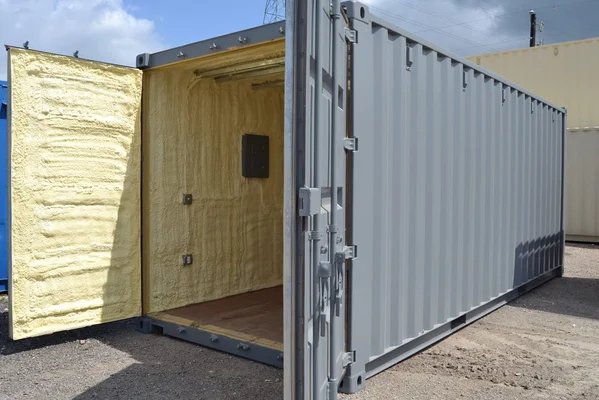
Modified shipping containers are used for multiple applications and in many regions —all the way from the heat of a Texas summer to the frigid cold of a Minnesota winter. You may be wondering how to insulate a shipping container to stay cool and warm in these climates.
The solution is simple. Modified shipping containers can be insulated to protect contents from the effects of heat and cold. How they’re insulated depends on two things, the climate and how the container will be used.
The following four environmentally friendly insulation options can insulate containers to create a comfortable, four-season climate-controlled structure:
1.Styrofoam panels (polystyrene)
2.Batt insulation
3.Spray foam insulation
4.Mineral wool
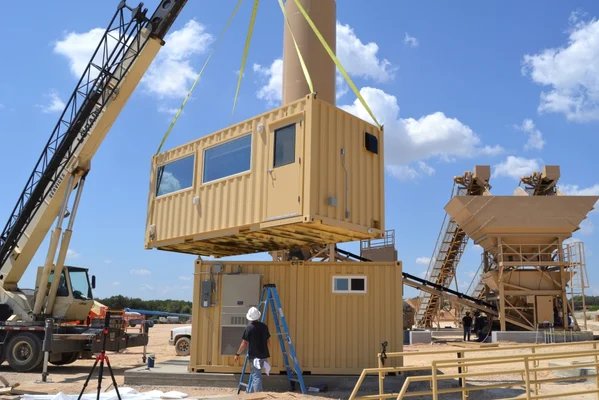
WHY INSULATE SHIPPING CONTAINERS?
There are many benefits of insulating a modified shipping container. The U.S. Department of Energy reports that nearly half of all annual energy dollars are spent on heating and cooling, and depending on where you live, it could be more than half. But you can drastically improve the energy efficiency of nearly any structure with proper insulation. With the right type and thickness of insulation, you can significantly reduce the amount of time your AC and heating systems in a shipping container have to run, minimizing power consumption – and your utility bill.
While sturdy and durable, a shipping container's steel walls can get very hot in the summer and cold in the winter. That means you’ll definitely need insulation if you intend to use the container as a living or working space, or if you plan to store temperature-sensitive assets such as electronics or perishable goods.
The amount and type of insulation your shipping container requires depends on the climate of your jobsite and the shipping container’s function. As noted, there are three basic options for creating optimum energy efficiency: Styrofoam, rolled batt,and spray foam insulation.
Each type of insulation has an R-value that indicates its efficacy as an insulator (the higher the R-value the greater the insulation). R-values are also additive: the same way that a Thermos with thicker walls does a better job keeping beverages hot or cold, thicker layers of insulation will have higher R-values, making them more eco-friendly.
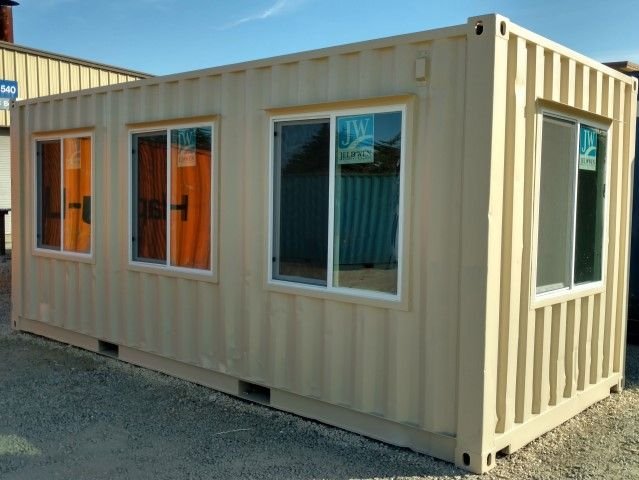
TYPES OF INSULATION FOR SHIPPING CONTAINER STRUCTURES
Styrofoam: Ideal for Basic Storage Containers
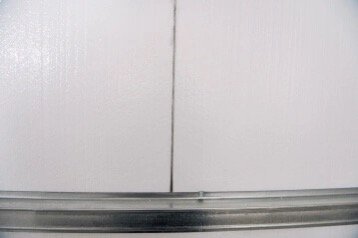
Fast and easy to install, polystyrene (commonly known by one brand name, Styrofoam) is a cost-effective way to add basic insulation to a storage container and has the added benefit of helping deaden sound. Using Styrofoam as the insulating material doesn’t require any build-out of stud walls to secure the panels (as batt insulation does).
The panels are glued directly onto the walls of the shipping container or mounted on bars that are flush with the walls, making it the most economical insulation method. Of the three types of insulation, it has the lowest R-value at 4, so it is most suitable for storage. Standard climate-controlled storage containers come with one inch of Styrofoam insulation which has a 50-year lifespan.
Batt Insulation: Ideal for Container Offices and Living Spaces
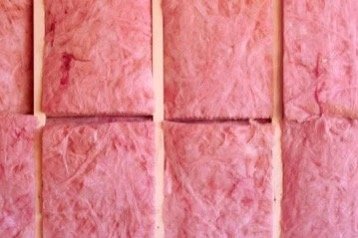
Made of finely woven strands of fiberglass, mineral wool, or plastic fibers, batt insulation—the pink cotton-candy-like material you’ve likely seen in attics and crawl spaces—is the industry standard for residential and office structures. Customers usually opt to use batt insulation for container offices and living spaces.
Once the shipping container’s interior wood framing is in place, batt insulation is easy to install and conceal behind a vapor barrier and plywood finish-out. While the insulation itself is very cost-effective, the framing and plywood can add extra costs. However, its superior performance will significantly reduce heating and cooling costs, bringing greater value over time. Batt insulation with an R 13 or R 19 rating is recommended to create comfortable living and working environments, and it has a lifespan of 100 years.
Spray Foam: Ideal for Temperature-Sensitive Equipment Enclosures
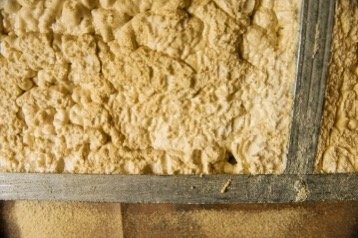
As its name suggests, spray foam insulation is sprayed onto interior surfaces where it expands slightly and sets as a hard, water-resistant covering. While not aesthetically pleasing on its own, spray foam requires no framing because it adheres to the shipping container walls. It has a high R-value (R = 6 per inch of thickness) and a long lifespan of 80 years.
Although there are interior finishes offered to cover spray foam, such as plywood or aluminum walls, customers looking for a purely functional climate-controlled space for temperature-sensitive equipment will sometimes choose spray foam with no further finish-out.
The nature of spray foam insulation includes other benefits, too:
● Acts as a sound barrier
● Won’t settle over time the way batt can
● Resists mold, fungus, and bacteria
Clearly, spray foam has many benefits, but the specialty equipment required for installation also makes it the most expensive option. Spray foam is ideal for enclosures that house highly temperature-sensitive assets, like paper documents, certain types of equipment, and computer network servers.
Mineral Wool: Ideal for Applications That Require Non-Flammable Materials
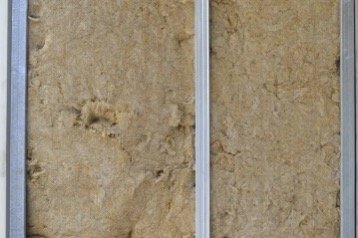
Mineral wool is sometimes called rock or slag wool insulation because it’s made from rock, blast furnace slag, or other melted raw materials. These materials are spun into fibers that appear to have a similar texture to wool. Mineral wool is used for living spaces but is ideal for applications that require a non-flammable insulation option.
The installation of mineral wool requires framing, like rolled batt, but steel framing helps with entirely non-flammable projects. An R-value of 13 on the walls and 26 on the ceiling helps deaden sound and provides thermal insulation while repelling water.



